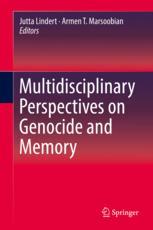

Most ebook files are in PDF format, so you can easily read them using various software such as Foxit Reader or directly on the Google Chrome browser.
Some ebook files are released by publishers in other formats such as .awz, .mobi, .epub, .fb2, etc. You may need to install specific software to read these formats on mobile/PC, such as Calibre.
Please read the tutorial at this link: https://ebookbell.com/faq
We offer FREE conversion to the popular formats you request; however, this may take some time. Therefore, right after payment, please email us, and we will try to provide the service as quickly as possible.
For some exceptional file formats or broken links (if any), please refrain from opening any disputes. Instead, email us first, and we will try to assist within a maximum of 6 hours.
EbookBell Team

4.3
8 reviewsThis book explores the memory and representation of genocide as they affect individuals, communities and families, and artistic representations. It brings together a variety of disciplines from public health to philosophy, anthropology to architecture, offering readers interdisciplinary and international insights into one of the most important challenges in the 21st century. The book begins by describing the definitions and concepts of genocide from historical and philosophical perspectives. Next, it reviews memories of genocide in bodies and in societies as well as genocide in memory through lives, mental health and transgenerational effects. The book also examines the ways genocide has affected artistic works. From poetry to film, photography to theatre, it explores a range of artistic approaches to help demonstrate the heterogeneity of representations. This book provides a comprehensive and wide-ranging assessment of the many ways genocide has been remembered and represented. It presents an ideal foundation for understanding genocide and possibly preventing it from occurring again.